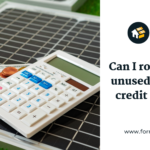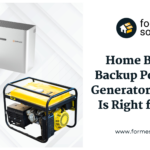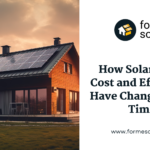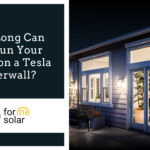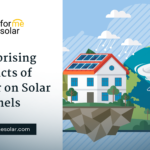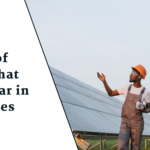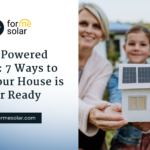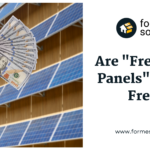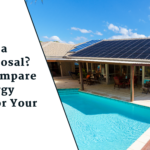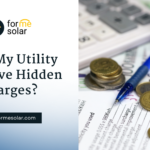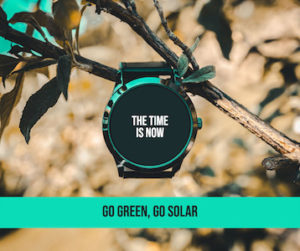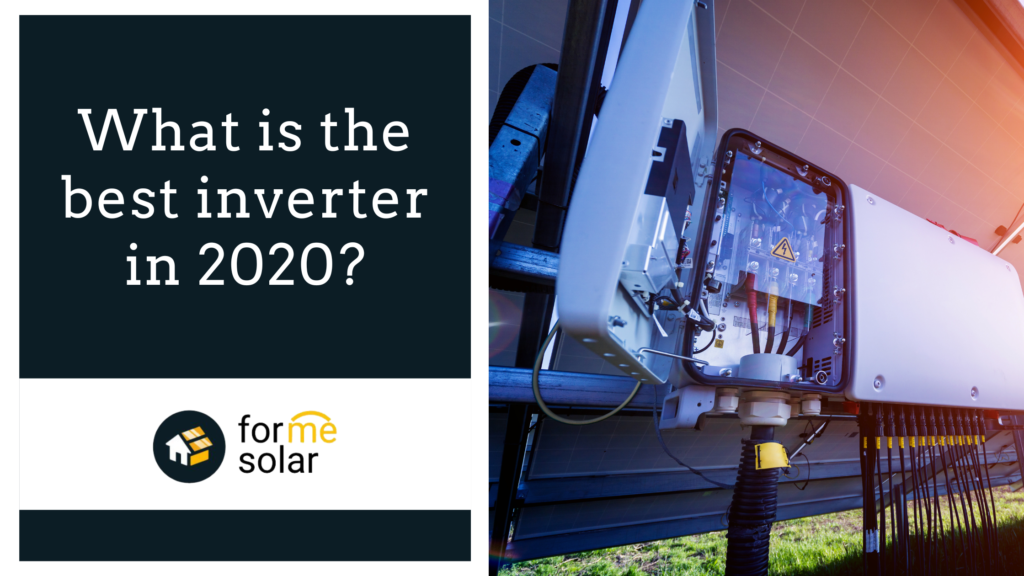
Table of Contents
Best inverter in 2020: String Inverter vs Microinverters
As you compare solar power companies, they will all recommend different types of solar equipment. It can be not very clear, especially if these are terms that you hear for the first time. While most customers primarily focus on the solar panels when they purchase the product, the inverter is the most critical piece of your solar energy system. Forme Solar, in 2020 did over 2,000 solar repair services. The majority of the solar repairs were due to the inverter.
When evaluating your inverter, you need to consider the difference between string and microinverters. Inverters are a crucial part of a solar energy system because they convert direct current (DC) generated from solar panels, thanks to solar radiation, into usable alternating current (AC) that your household appliances can use. Read our guide to get a general understanding of the difference between the two most common solar inverter options:
String Inverters
String inverters are currently the most cost-effective inverter option available. Another advantage is that the string inverter can be placed in the shade, protecting from the weather and heat. String inverters work efficiently when solar panels are on a single plane without shading. For example, if you have 20 solar panels, a solar installation company will install the solar panels in 2 strings of 10 modules. The solar panels are connected in series, and for home solar, the series of solar panels can reach up to 600 volts DC.
When a solar energy system is designed using a string inverter, the solar panels are connected in a line. This line moves the electrical current to a central inverter. These connected solar panels are known as a "string array." Solar panels on a solar string array are like a string of holiday lights. When using a string inverter, if one solar panel fails, the entire string of solar panels is impacted. A drop in your solar system's performance can also happen if a solar panel output drops. This output drop can occur due to shade, a passing cloud, or some other unavoidable factor. Your solar energy system's performance levels down to match the lowest-performing module.
Many homeowners in California find that a string inverter works for their home's electricity needs. The string inverter usually comes with a ten (10) year manufacturer warranty, and, typically, using string inverters is a less costly way to install a solar energy system.
Microinverters
Microinverters have been around since the mid-90s but only recently gained popularity in the solar industry. Unlike the string inverter, with the microinverters, there is an inverter mounted at every panel. Solar Microinverters are rapidly gaining popularity, particularly in the United States residential solar market. Typically, microinverters are a more expensive option, but they have some unique advantages. Microinverters convert the DC electricity at the panel level with no need for a separate inverter.
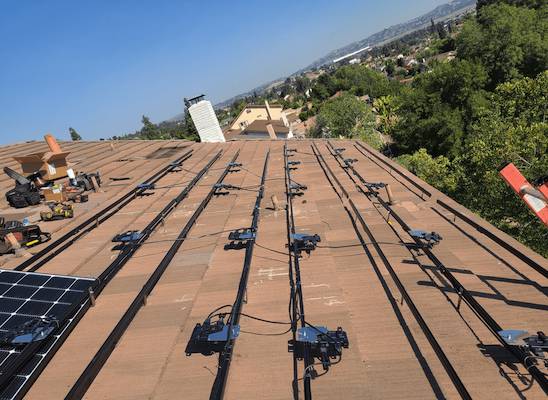
Microinverters are connected in series and typically have a lower voltage. For solar energy systems for your home, the voltage for a microinverter generally is 240 volt. This voltage is considerably lower than with a string inverter, therefore, safer. One of the significant advantages of microinverters is that they help mitigate the impact of shading.
Microinverters can work essentially as a unique entity, there is no "bottleneck" when one panel is shaded. Another advantage of microinverters is that a home's solar energy system can have multiple panel orientations such as south and west. Microinverters, like Enphase Energy's IQ7+ and IQ7X, come with an online performance monitoring system called Enlighten. Enlighten that allows you to monitor every single module's performance visually. Production monitoring with microinverters is the best way to track the individual performance of every solar panel's performance.
Difference Between Inverter vs. Microinverter Overview
Enphase is a micro-inverter system, which means a small inverter is attached to each panel. At the same time, string-inverters connect the solar panels as a string. String inverters with optimizers enhance the performance of traditional string-inverters. Solar panel optimizer attached to each solar panel, and they connect to a single inverter.
Best Benefit of Microinverters
The most significant benefit of Enphase Microinverters is the ease of scalability and upgrade-ability. Since every solar panel and microinverter act independently from the other, you can add to your system as your energy depends on change over the years.
Best Benefit of Inverters
The most significant benefit of a string inverter is the cost. String inverters are the lowest cost inverter option and are cheaper in terms of equipment and labor.
Best Inverter Option? Enphase Microinverters
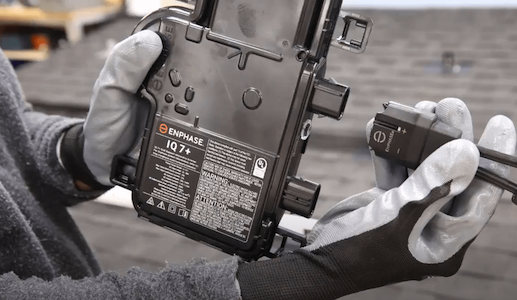
If you want the latest technology for your home solar energy system, then you might consider the benefits of a microinverter system from Enphase Energy. Enphase allows for module-level monitoring just like SolarEdge. And if a module or micro-inverter fails, it's alright because they all act independently of each other.
By utilizing microinverters for your solar energy system, you would have one (1) inverter for each solar panel. This is a distinct advantage of microinverters because a solar panel can be isolated from the whole system. This isolation doesn't have any negative impact towards the the overall performance of your solar energy system if there is an issue with one of the inverters. In terms of repair and maintenance, microinverters typically have a lower risk of failure. Since they don't have the same cooling need as the string inverter solar system and typically come with a 25-year inverter manufacturer warranty.
Inverter Maintenance?
As a solar repair company, 99% of the issues that stem from a solar energy system are due to an inverter. Microinverter or otherwise has more problems than solar panels. The whole inverter+optimizer versus microinverter debate is already a closed chapter for Forme Solar Electric. Microinverters have proven to be far easier to install, troubleshoot, and replace than any inverter+optimizer setup we have ever come across.
Enphase Energy's technical support is fast to respond and knowledgeable. Plus, their monitoring platform, Enphase Enlighten, is one of the best that we've seen to date. Whenever we have done a warranty replacement with Enphase Energy, the replacement microinverters arrive within less than two weeks. While these two setups' functionality is designed to be the same, the overall service experience is vastly different. With microinverters being superior. But, that's our technical perspective.
The inverter+optimizer versus microinverter choice has now been boiled down to a purely financial decision. With microinverters costing an average of 10-15% more. Solar sales guys make the most money when they sell you the cheapest equipment at the highest price. When you are told that switching from an inverter+optimizer setup to a microinverter structure costs the same, it usually means they were over-charging for the cheaper installation from the start.
Best Solar Panel Company for Solar Installation
How do you choose the solar system equipment that is best for your home needs? Contact the team at Forme Solar by contacting us at www.formesolar.com/get-quote or by calling 714-694-2262. We would love the opportunity to provide a FREE analysis of the benefits and cost of solar. See if you can save money switching to solar. Whether you are paying San Diego Gas & Electric (SDG&E), Pacific Gas & Electric (PG&E), Southern California Edison (SCE), or Los Angeles Department of Water and Power (LADWP) territory, going solar may help save you money. See exactly how much by contacting the top-rated solar installation company in California.


